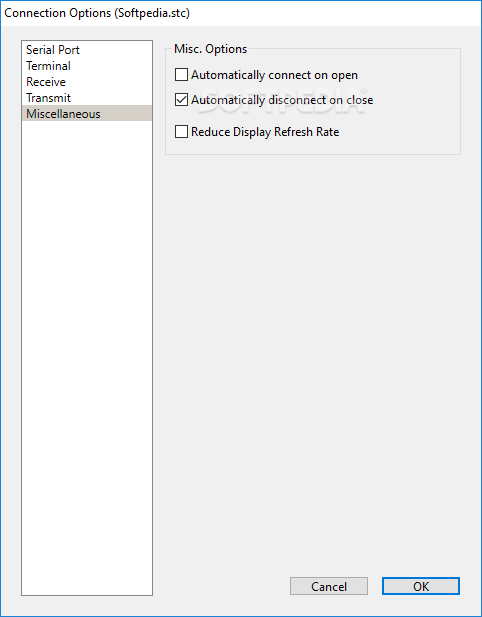Coolterm
CoolTherm is the latest advancement in thermal management and infuses high-performance thermal interface materials with world-class service and support. Our team is highly responsive and specialized in custom formulations in the multiple chemistries to meet your performance, cost and schedule targets. One awesome feature of CoolTerm is Hex View. If you want to see the actual hex values of the data you are sending rather than the ASCII values, Hex View is a tremendous help. Click the View Hex icon. The terminal’s appearance will change slightly. Now whatever you type will show up as hex and ASCII. The first column. CoolTerm is a tool that's geared towards hobbyists and professionals with a need to exchange data with hardware connected to serial ports such as servo controllers, robotic kits, GPS receivers, microcontrollers etc. This download is licensed as freeware for the Windows (32-bit and 64-bit) operating system/platform without restrictions. CoolTerm, free download. CoolTerm was developed as a useful and user-friendly software and acts as a serial port terminal application. CoolTerm is a tool that's geared towards hobbyists and professionals with a need to exchange data with hardware connected to serial ports such as servo controllers, robotic kits, GPS receivers, microcontrollers etc.
I typically have used iTerm and the screen command for USB-Serial console access. But CTRL-Break is a nightmare. SecureCRT is a great app, but they are up to $99 w/only 1-year of upgrades.
CoolTerm is a fantastic little free Windows and OSX Console program. With a little tweaking it is perfect for serial console into routers/switches.
Once loaded, make the following changes in Options:
- Select your USB-Serial adapter on the Port list. Re-Scan serial ports if you didn’t plug it in before launching.
- On the Terminal menu option select “CR” for Key Emulation, and Check the “Handle Backspace Character.”
Good to go. Control-Break is just Command-B on the Mac. Can’t beat that.
This is a list of notable terminal emulators. Most used terminal emulators on Linux and Unix-like systems are GNOME Terminal on GNOME and GTK-based environments, Konsole on KDE, and xfce4-terminal on Xfce as well as xterm.
Character-oriented terminal emulators[edit]
Unix-like[edit]
Command-line interface[edit]
- Linux console – implements a large subset of the VT102 and ECMA-48/ISO 6429/ANSI X3.64 escape sequences.
The following terminal emulators run inside of other terminals, utilizing libraries such as Curses and Termcap:
- GNU Screen – Terminal multiplexer with VT100/ANSI terminal emulation
- Minicom – text-based modem control and terminal emulation program for Unix-like operating systems
- tmux – Terminal multiplexer with a feature set similar to GNU Screen
Graphical[edit]

X11 and Wayland[edit]
Terminal emulators used in combination with X Window System and Wayland
- xterm – standard terminal for X11
- Alacritty – GPU accelerated, without tabs
- kitty – GPU accelerated, with tabs, tiling, image viewing, interactive unicode character input
- GNOME Terminal – default terminal for GNOME with native Wayland support
- guake – drop-down terminal for GNOME
- konsole – default terminal for KDE
- xfce4-terminal – default terminal for Xfce with drop-down support
- Terminator – written in Java with many novel or experimental features
- Terminology[1] – enhanced terminal supportive of multimedia and text manipulation for X11 and Linux framebuffer
- Tilda – a drop-down terminal
- Yakuake – (Yet Another Kuake) a drop-down terminal for KDE
- rxvt – lightweight X11 terminal emulator
- aterm (from rxvt 2.4.8) created for use with the AfterStep window manager (no longer maintained)
- Eterm (from rxvt 2.21) created for use with Enlightenment
- mrxvt (from rxvt 2.7.11) created for multiple tabs and additional features (latest version released in 2008-09-10)
- urxvt (from rxvt 2.7.11) created to support Unicode, also known as rxvt-unicode
- Wterm – created for NeXTSTEP style window managers such as Window Maker
macOS[edit]
Terminal emulators used on macOS
- Terminal – default macOS terminal
- iTerm2 – open-source terminal specifically for macOS
- xterm – default terminal when X11.app starts
- ZTerm – serial line terminal
Apple Classic Mac OS[edit]
Microsoft Windows[edit]
- ConEmu – local terminal window that can host console application developed either for WinAPI (cmd, powershell, far) or Unix PTY (cygwin, msys, wsl bash)
- HyperACCESS (commercial) and HyperTerminal (included free with Windows XP and earlier, but not included with Windows Vista and later)
- mintty – Cygwin terminal
- Windows Console – Windows command line terminal

Microsoft MS-DOS[edit]
- Qmodem and Qmodem Pro
IBM OS/2[edit]
- ZOC – discontinued support for OS/2
Commodore Amiga[edit]
Commodore 64[edit]

Block-oriented terminal emulators[edit]
Emulators for block-oriented terminals, primarily IBM 3270, but also IBM 5250 and other non-IBM terminals.
Coax/Twinax connected[edit]
These terminal emulators are used to replace terminals attached to a host or terminal controller via a coaxial cable (coax) or twinaxial cabling (twinax). They require that the computer on which they run have a hardware adapter to support such an attachment.
- RUMBA 3270 and 5250
Coolterm Ubuntu
tn3270/tn5250[edit]
Coolterm Mac
These terminal emulators connect to a host using the tn3270 or tn5250 protocols, which run over a Transmission Control Protocol (TCP) connection.
- Eicon Aviva
- x3270 – IBM 3270 emulator for X11 and most Unix-like systems[2]
- Tn5250j
- Rocket BlueZone
- IBM Personal Communications
- c3270 – IBM 3270 emulator for running inside a vt100/curses emulator for most Unix-like systems[2]
See also[edit]
References[edit]
- ^Schroder, Carla (November 16, 2017). '5 Coolest Linux Terminal Emulators'. Linux.com.
- ^ ab'x3270'.
External links[edit]
- The Grumpy Editor's guide to terminal emulators, 2004
- Comprehensive Linux Terminal Performance Comparison, 2007